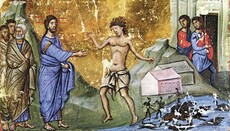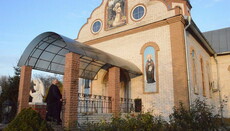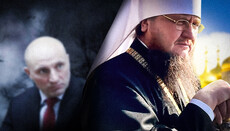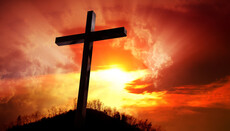On the symbolism of Tithe Church: Ukrainian authorities vs Batu Khan
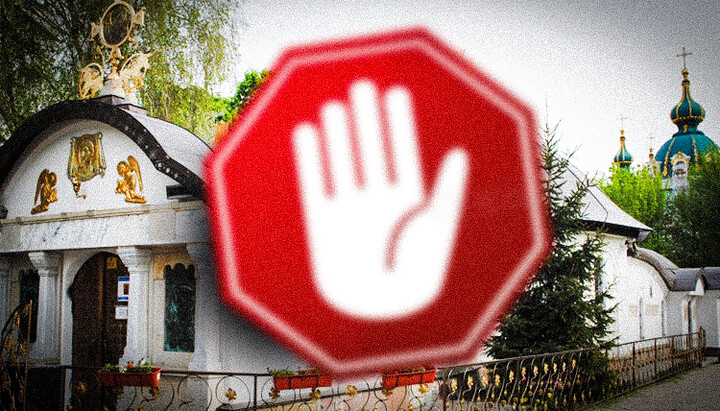
What does this church mean for Ukrainian Orthodoxy, and why can't it be demolished?
The Ukrainian authorities have been engaged in a long-standing struggle against the Tithe Monastery and specifically against the Church of the Holy Equal-to-the-Apostles Princes Vladimir and Olga. They claim that the church was built illegally and demand its demolition. The believers refuse and try to defend their rights in court. Despite the fact that the judicial ways to save the temple have not been exhausted yet, there is already a document of the state executive service with a warning of the destruction of the shrine on 7 May 2024, which state executors taped to the doors of the church around 5 p.m. on 3 May. However, on 6 May 2024, it became known that the construction company "Smile Construction," which was supposed to demolish the church, informed the executive service that they were unable to do so due to a lack of construction equipment. This was an excuse as we all understand. Believers spent the night of 7 May 2024 in prayer in the church and hope for God's mercy and Divine help in preserving the shrine. It is worth remembering what this church is, what significance it has for Orthodoxy in Ukraine and reflect on the symbolism of the authorities' struggle against the Tithe Church.
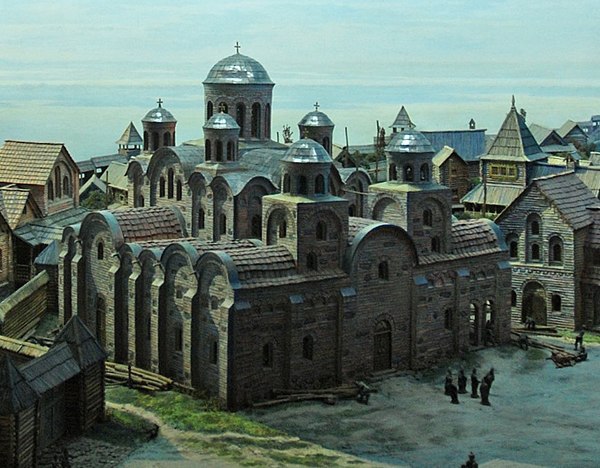
The Church of the Dormition of the Most Holy Theotokos, also known as the Tithe Church, was built between 989 and 996 by St Prince Vladimir the Equal-to-the-Apostles. It is the first stone church of Rus and the first cathedral of the Kiev Metropolis. One cannot speak of the reasons for its construction without mentioning Vladimir the Great, his transformation from a passionate pagan to a Christian saint, and the Baptism of Rus, which became the focus of his entire life.
The Holy Equal-to-the-Apostles Prince
St Prince Vladimir is a unique figure in the entire 2000-year history of Christianity. Few Christian rulers experienced such sincere and profound repentance, few exerted as much effort to convert their people to the Orthodox faith, and even fewer are those who have tried so diligently to fulfil God's commandments in both their personal lives and in politics and public affairs. Before his conversion, Vladimir was a resolute and cruel ruler, authoritative, cunning and ambitious. He gained power in Kiev through a bloody fratricidal war, which was commonplace in those times. After the death of Prince Sviatoslav in 972, an internecine war for the throne of Kiev broke out between his sons Yaropolk, Oleg and Vladimir. At that time, Vladimir was the Prince of Novgorod. Having recruited an army in the Varangian lands, he marched to Kiev but the Principality of Polotsk, ruled by Rogvolod, lay on his way. Vladimir sent negotiators to him with a request to marry his daughter, Rogneda, and allow his army to go through his lands. Rogvolod refused, and the proud Polotsk princess replied to the marriage proposal: "I do not wish to wed a son of a slave woman," hinting that Vladimir's mother was merely Sviatoslav’s concubine, a commoner named Malusha, and thus he was born out of wedlock. As a result of this refusal, Vladimir took Polotsk by storm, raped Rogneda in front of her parents, and then killed her father and two brothers. He then cunningly lured his brother Yaropolk to negotiations and ordered his men to secretly kill him. And after reigning in Kiev, Vladimir sent a Varangian mercenary army to the Byzantine Emperor with secret orders to disperse them to various locations, as he did not want to pay them the due payment from the conquered Kiev for their military services.
This brief narrative vividly characterises Prince Vladimir. It remains to add that in Kiev, he became so zealous in affirming the worship of pagan idols that he decided to offer human sacrifices, which, apparently, had not been practiced for a long time. So perished the first Christian martyrs in Rus, the Varangians Theodore and John. And the final touch to Vladimir's portrait: "And he was insatiable in fornication, taking married women to himself and molesting maidens" (The Tale of Bygone Years).
And then a radical transformation occurred in him. One can only wonder at the reason for that. From a lustful and authoritarian pagan, he turned into a paragon of virtue and piety. It was akin to how the fanatical Pharisee Saul went out from Jerusalem to persecute Christians and one of the most fervent apostles of Christ, Paul, came to Damascus.
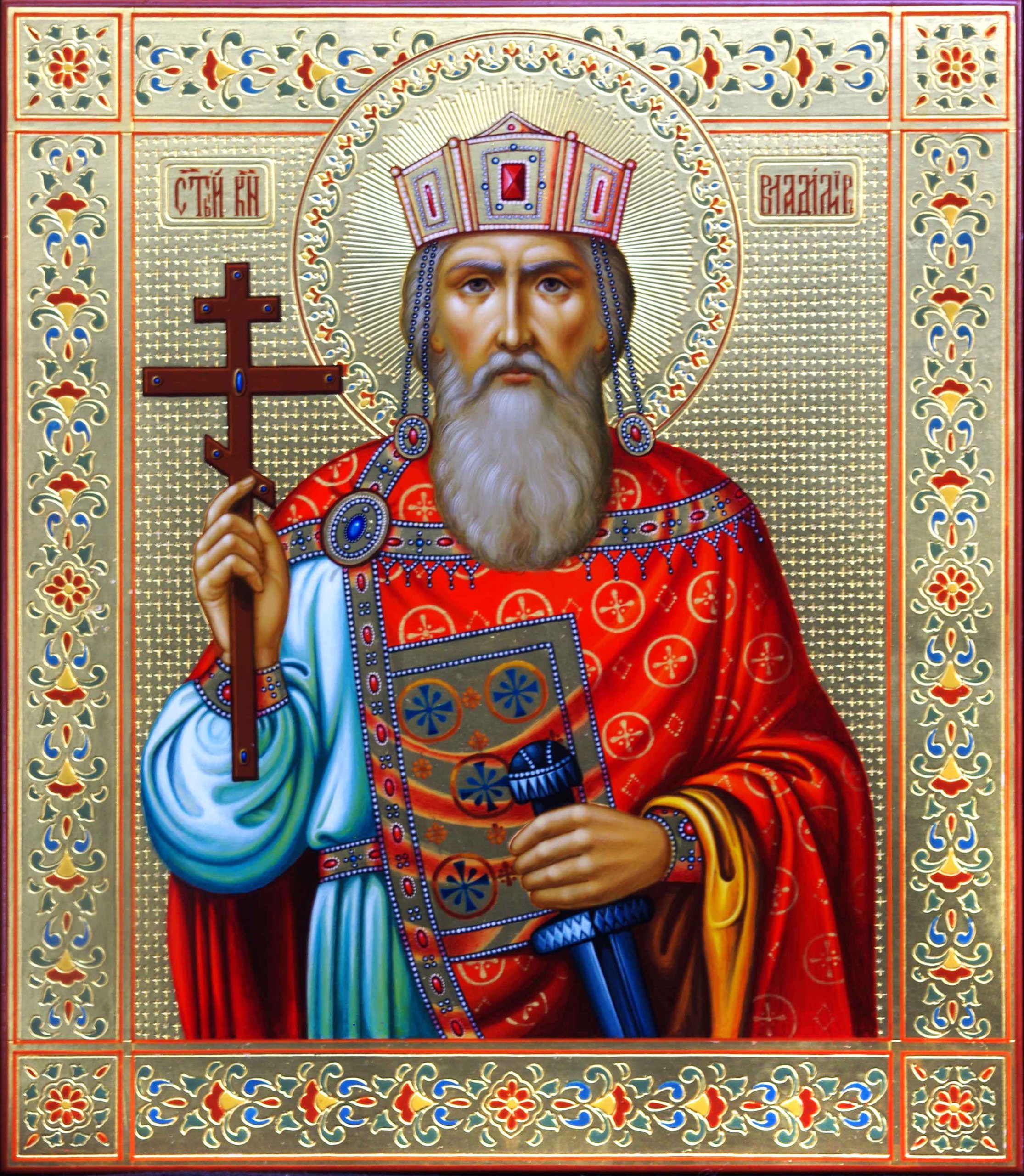
Kiev Metropolitan Ilarion, in his famous Eulogy to Prince Vladimir, which he pronounced at his tomb in the presence of Prince Yaroslav the Wise, perplexedly exclaimed: "How did you believe? How did you become inflamed with the love of Christ? How did the highest wisdom of earthly wise men enter into you, enabling you to love the invisible and aspire to the heavenly? How did you seek Christ? How did you surrender yourself to Him? Tell us, your servants, tell us, our teacher, from where did the fragrance of the Holy Spirit come upon you? Who gave you to drink from the sweet cup of remembrance of the future life? Who allowed you to taste and see how good the Lord is? You did not see Christ, nor did you walk with Him: how then did you become His disciple? Others, seeing Him, did not believe, but you, without seeing, believed! You did not see the apostle who came to your land, with his poverty and nakedness, with hunger and thirst, made your heart humble. You did not see how demons were cast out in the name of Christ, how the sick were healed, how flame was changed into the cold, how the dead were raised. Not seeing all this, how did you believe? A marvelous miracle! Other kings and rulers, seeing all these miracles performed by holy men, did not believe but even they themselves were put to sufferings and torments. But you, O blessed one, without all this, turned to Christ. Guided only by your good sense and sharp mind, you comprehended that there is one God, the Creator of the invisible and visible, of the heavenly and earthly, and that He sent His beloved Son into the world for its salvation. And with these thoughts, you entered the holy font. Thus, what seemed madness to others, was for you the power of God..."
Behind these lofty, yet profoundly deep words is the idea that Prince Vladimir's adoption of Christianity occurred not due to any worldly political motives, as many are used to explaining the Baptism of Rus, but as a result of Vladimir's personal and very sincere turning to the Truth of Christ. Saint Nestor the Chronicler also recounts a certain vision of Christ that the prince experienced. Turning to God and sincerely repenting for his misdeeds ("like a wild beast, I did much evil in idolatry and living like an animal"), Vladimir radically changed his life. He dismissed all his wives and concubines, began to show exceptional mercy to the poor and needy, and even temporarily abolished the death penalty. He ruled his people so wisely and did so much good that the people called him Vladimir the Red Sun in the epic tales.
As for where exactly Vladimir was baptised and when, sources give different information. For example, Nestor claims that Vladimir was baptized in Korsun after its capture, but adds: "this is not known for certain, some say he was baptised in Kiev. However, others say: in Vasilev. But friends will say differently." The most likely version is that Vladimir was baptised three years before the capture of Korsun, and it was not a public event. The 11th-century chronicler Jacob the Monk writes: "In the second year after the baptism, he went to the rapids. In the third year, he took the town of Korsun. In the fourth year, he laid the foundation stone of the Church of the Holy Theotokos. And in the fifth year, he founded Pereyaslavl. In the ninth year, the blessed and Christ-loving Prince Vladimir granted a tithe from his possessions to the Church of the Holy Mother of God.”
Construction of the Tithe Church
The last words were said about the Tithe Church, which Vladimir began to build in 989 and completed in 996. At that time, he allocated ten percent of all princely income for the maintenance of the church and the metropolis under him, which is why the temple came to be called the Tithe Church. It was built by Greek craftsmen, whom Vladimir invited from Byzantium. In the Tithe Church, there was a princely burial сhamber, where they buried Vladimir's Christian wife – Byzantine Princess Anna, who died in 1011, and then Vladimir himself, who died in 1015. Also, the remains of Princess Olga were transferred here from Vyshgorod. The church was richly adorned with icons and utensils brought from Korsun. From there came the first rector of the Tithe Church, Anastasius of Korsun, who, according to some sources, helped Vladimir take over Korsun. Among the relics of the church were the remains of St Clement of Rome, one of the seventy apostles, which were also brought from Korsun along with a marble sarcophagus.
For several decades, the Tithe Church served as the metropolitan cathedral until this function was taken over by the St Sophia Cathedral, built in 1037 by Prince Yaroslav the Wise. Thus, the Tithe Church is a symbol of the ancient legacy of St Prince Vladimir, the baptiser and enlightener of Rus.
The temple was plundered twice during internal wars. In 1169, it was looted by the troops of Prince Mstislav Andreevich, a son of Andrey Bogolyubsky, and in 1203, by the troops of Rurik Rostislavich. In 1240, Khan Batu’s hordes completely destroyed it.
The Church under Peter Mohyla
The restoration of the Tithe Church was undertaken in the 1630s by the Metropolitan of Kiev, Peter Mohyla. He conducted archaeological excavations, during which several sarcophagi were found, and also built a small church dedicated to the Nativity of the Most Holy Theotokos above the southwest corner of the ancient temple.
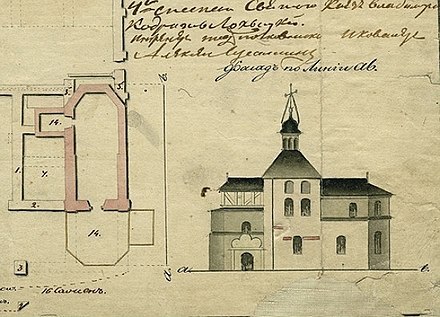
The location and architecture of this temple are quite peculiar. On one hand, the church is very small and quite plain in appearance, hardly resembling any kind of restoration of the 10th-century Tithe Church. On the other hand, if Peter Mohyla regarded it as temporary or symbolic, hoping that the cathedral would be restored someday, then it is unclear why he built it above the southwest corner of the ancient temple, partially covering the foundations. Perhaps he assumed that when the time for building the cathedral came, it would simply be dismantled.
And indeed, this happened in the 1820s when, according to the project of the St. Petersburg architect Vasily Stasov, construction of the new large Tithe Church began. Unfortunately, the architect and the decision-makers did not concern themselves with giving the church at least some resemblance in architectural style to the Tithe Church of Prince Vladimir's time. It is сlear that no images of this church have survived. But the ancient foundations have been preserved. There is also an idea of what the 10th-century cathedral might have looked like, based on other churches built at the same time.
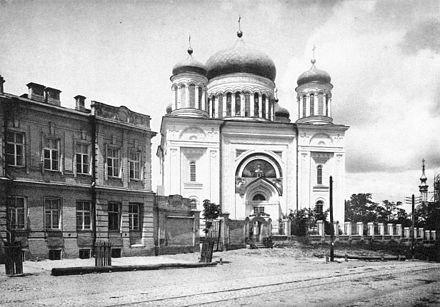
For the construction of this cathedral, it was necessary to dismantle about half of the surviving foundations of the 10th-century temple by that time. But this church also suffered a tragic fate. In 1928, the communist authorities detonated the Tithe Church, along with many other churches in Kyiv and throughout the country; and in 1936, they dismantled the ruins left in its place.
The modern temple
Just as after the destruction of the Tithe Church by Batu’s army in 1240, its restoration was the concern of Kiev Metropolitan Peter Mohyla in 1635, so after its destruction by the Communists in 1928, Metropolitan Vladimir (Sabodan) of Kiev blessed to set up a tent-shrine first and then the construction of a small church of the Equal-to-Apostles Princes Vladimir and Olga in 2006. A monastery was also organized at the temple.
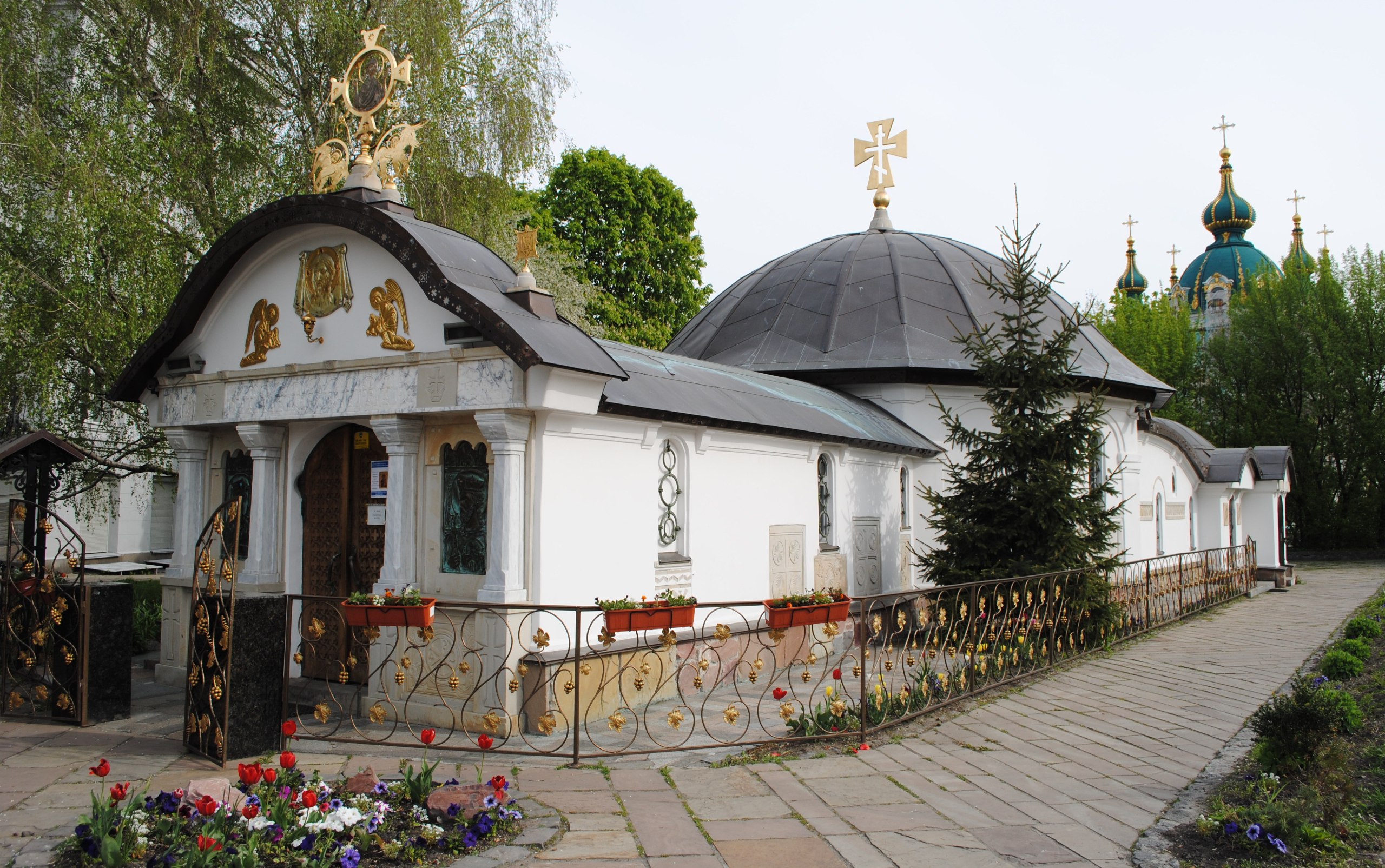
The mistakes of the architects of both the 17th and 19th centuries were taken into account. Firstly, the church is built in the Neo-Byzantine style, characteristic of the end of the 10th century. Secondly, it is located aside from the foundations of the previous cathedrals of the 10th and 19th centuries. This allows for a future resolution regarding the construction of a large Tithe Church on the site of the old foundations, or to abandon such an idea and preserve the foundations as an architectural monument, which they currently are.
Afterword
When discussing the continuity of the Tithe Church construction from the 10th, 17th, 19th, and 21st centuries, we, of course, are not referring to its cultural value as an architectural monument but rather its sacred significance as a shrine of our people. In this sense, whether it is a large or small church, whether it stands on the exact spot or slightly aside, whether it resembles the original architecture or not, it doesn’t matter. If on this spot the holy Throne stands, the Unbloody Sacrifice is performed, prayers are offered to God, then the work of St Prince Vladimir lives on. the abomination of desolation rise in this place, it means that we, the descendants of Prince Vladimir, betray him, renounce the religious and moral choice he made. We bear witness that for us, the spiritual struggle against the cunning demons, from which he emerged victorious, means nothing. We renounce our roots, and therefore, we have no hope for the future.
Just think of it! The current Ukrainian authorities intend to resemble Batu Khan and godless communists by demolishing this temple. And yet, they verbally claim patriotism and love for Ukraine?! It is forbidden to raise a hand against the house of God, because by doing so, we set in motion certain sacred processes, the mechanism of which may be incomprehensible to us, but the result is well known. And judging by historical precedents, it is very tragic.
The Apostle Paul wrote to the Corinthians: "If anyone destroys God's temple, God will destroy him. For God's temple is holy, and you are that temple" (1 Corinthians 3:17). When speaking about the temple, the apostle referred not to the building, but to the person as that temple, that vessel in which God dwells. But people who destroy wooden or brick temples must first destroy the temple of their own soul. Otherwise, they would not dare to destroy church buildings. And if this does happen, we can only wait to see when and in what form the punishment of God will befall such a person.
This applies to any temple, but if a temple that has a sacred significance for the entire nation is destroyed, divine punishment can befall everyone, as has often happened in history. Therefore, we must make every effort, primarily through prayer, to defend the Tithe Church so that the work of St Prince Vladimir lives on in our land and his legacy is not tarnished by ungrateful descendants.
